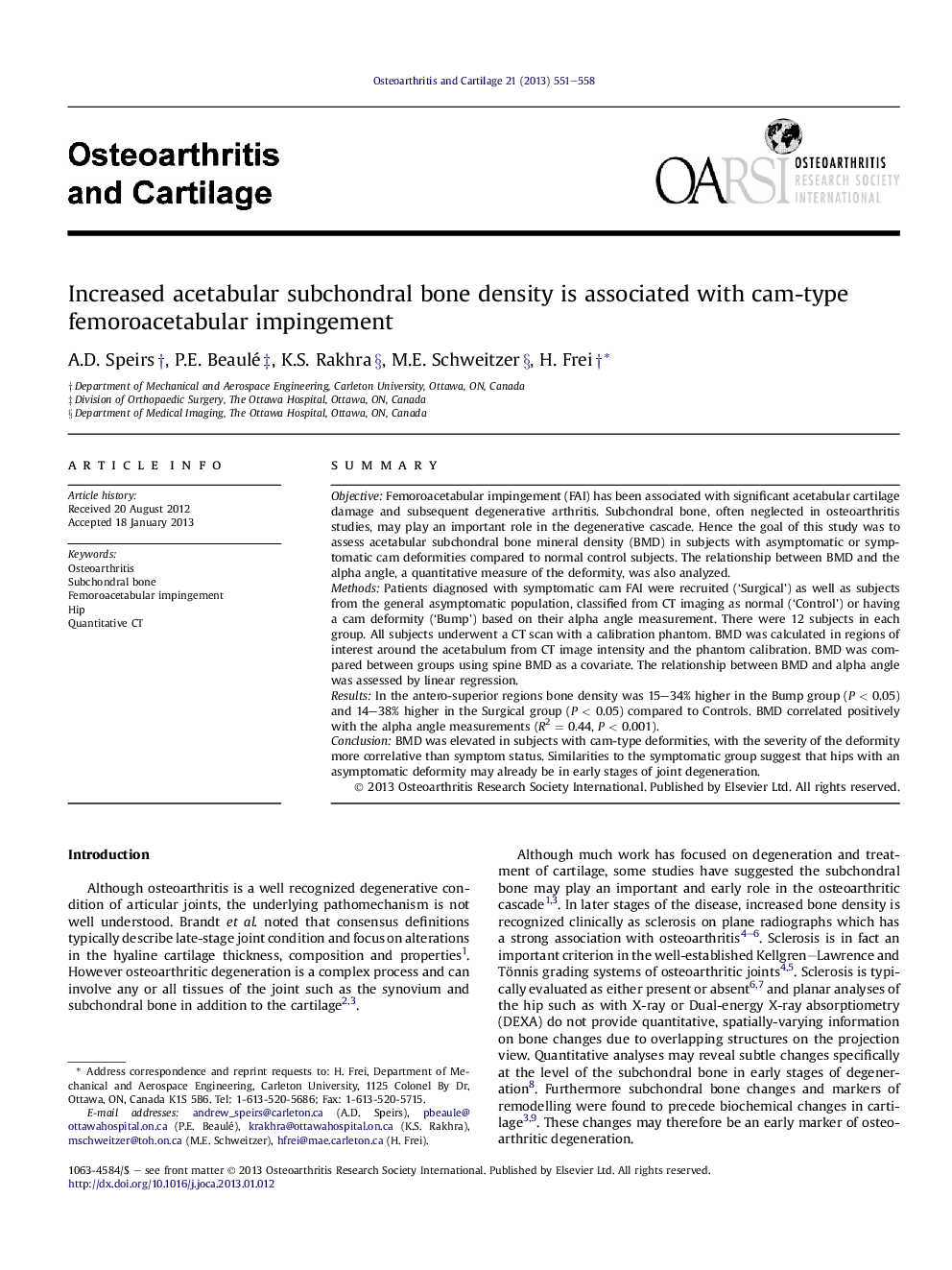| Article ID | Journal | Published Year | Pages | File Type |
|---|---|---|---|---|
| 3379691 | Osteoarthritis and Cartilage | 2013 | 8 Pages |
SummaryObjectiveFemoroacetabular impingement (FAI) has been associated with significant acetabular cartilage damage and subsequent degenerative arthritis. Subchondral bone, often neglected in osteoarthritis studies, may play an important role in the degenerative cascade. Hence the goal of this study was to assess acetabular subchondral bone mineral density (BMD) in subjects with asymptomatic or symptomatic cam deformities compared to normal control subjects. The relationship between BMD and the alpha angle, a quantitative measure of the deformity, was also analyzed.MethodsPatients diagnosed with symptomatic cam FAI were recruited (‘Surgical’) as well as subjects from the general asymptomatic population, classified from CT imaging as normal (‘Control’) or having a cam deformity (‘Bump’) based on their alpha angle measurement. There were 12 subjects in each group. All subjects underwent a CT scan with a calibration phantom. BMD was calculated in regions of interest around the acetabulum from CT image intensity and the phantom calibration. BMD was compared between groups using spine BMD as a covariate. The relationship between BMD and alpha angle was assessed by linear regression.ResultsIn the antero-superior regions bone density was 15–34% higher in the Bump group (P < 0.05) and 14–38% higher in the Surgical group (P < 0.05) compared to Controls. BMD correlated positively with the alpha angle measurements (R2 = 0.44, P < 0.001).ConclusionBMD was elevated in subjects with cam-type deformities, with the severity of the deformity more correlative than symptom status. Similarities to the symptomatic group suggest that hips with an asymptomatic deformity may already be in early stages of joint degeneration.
